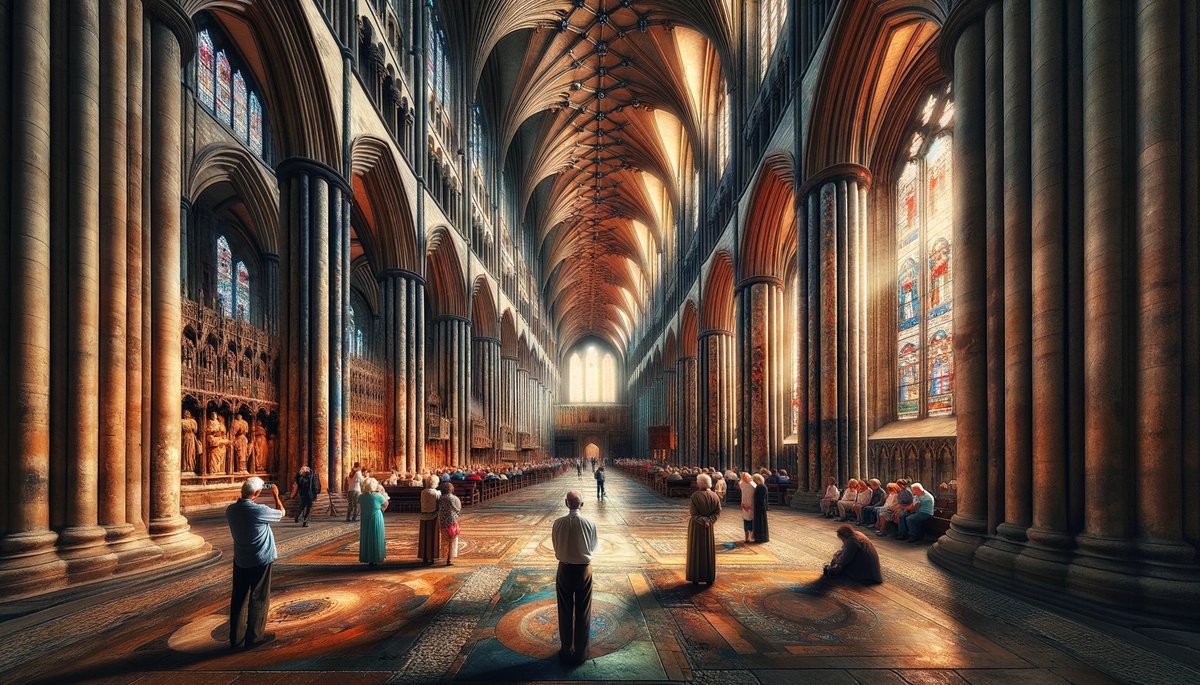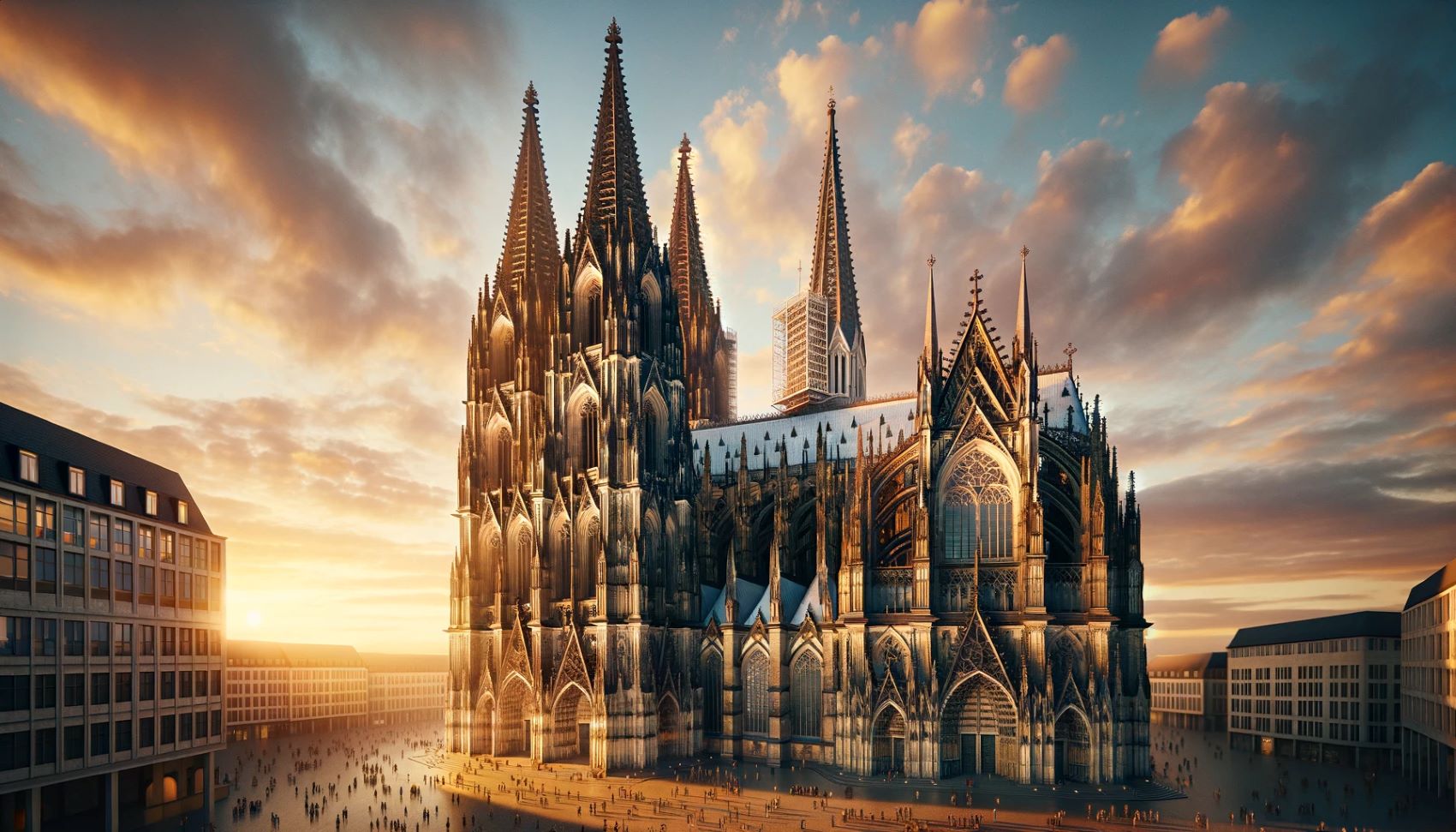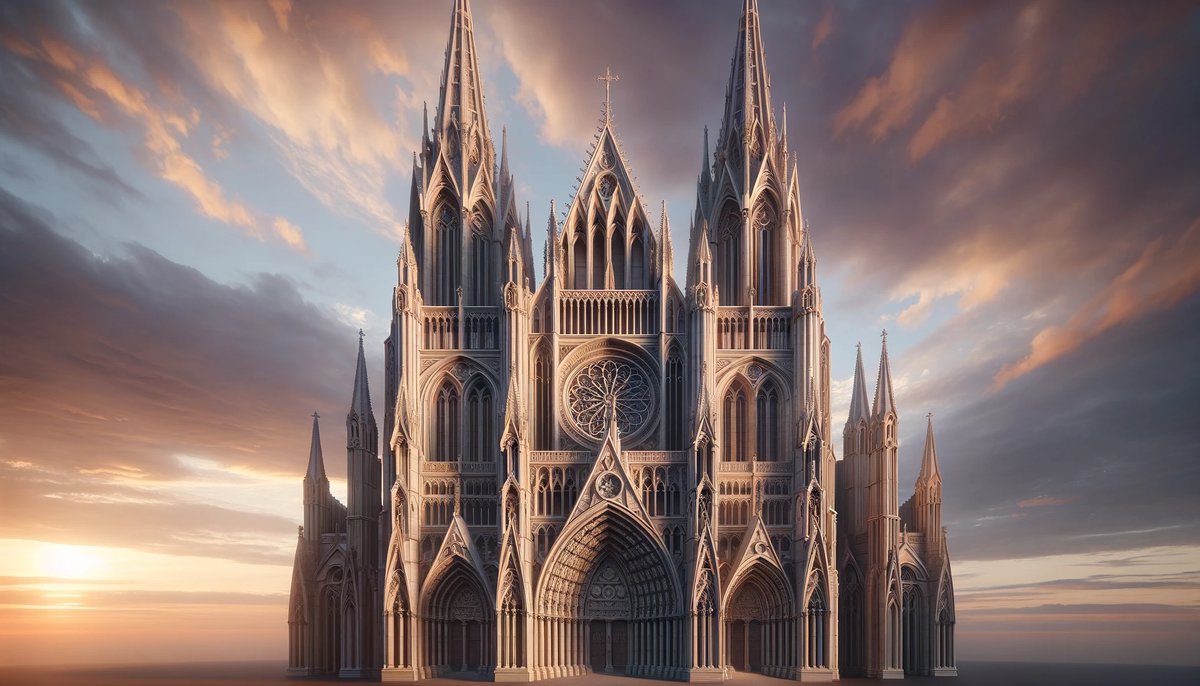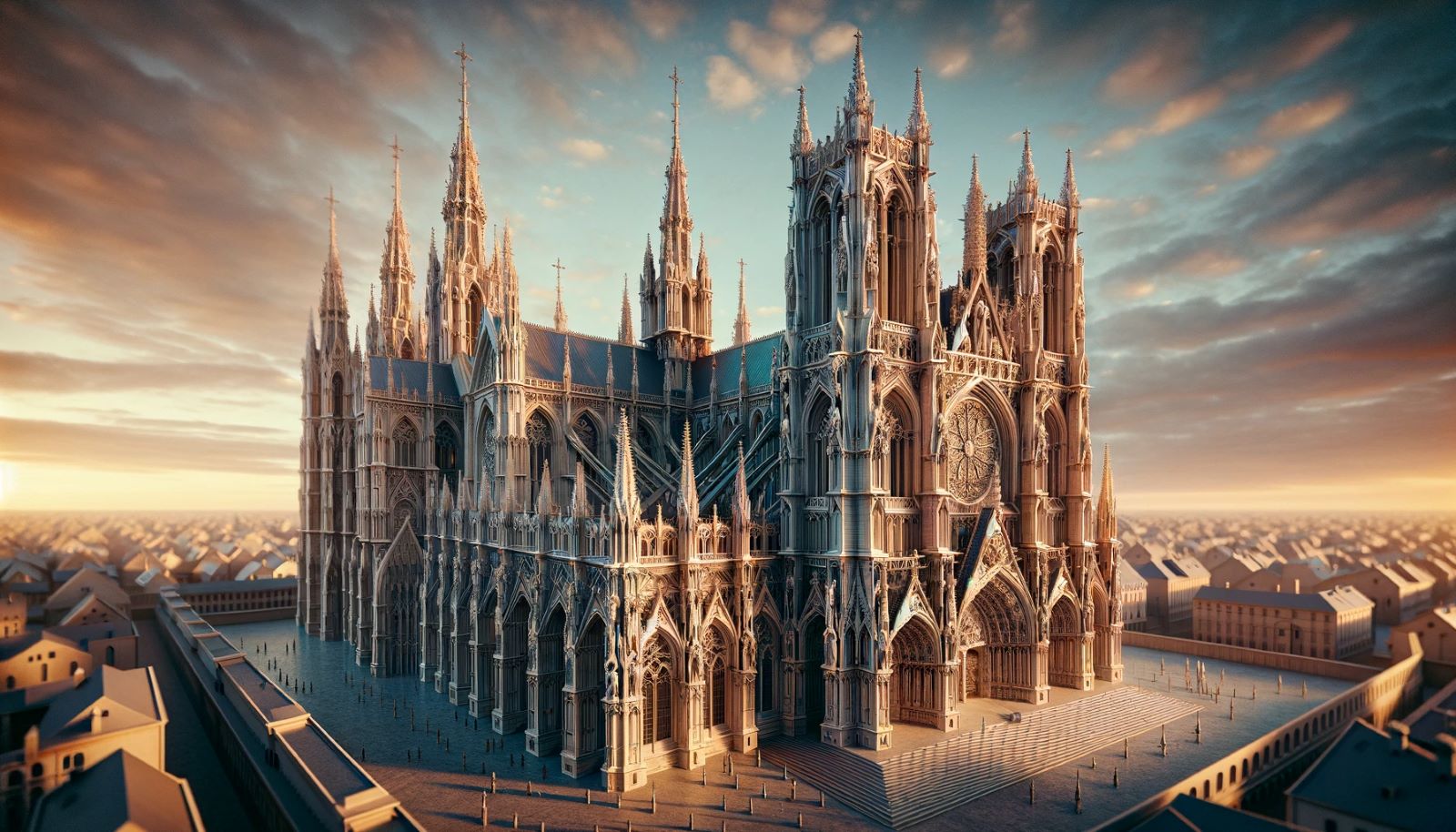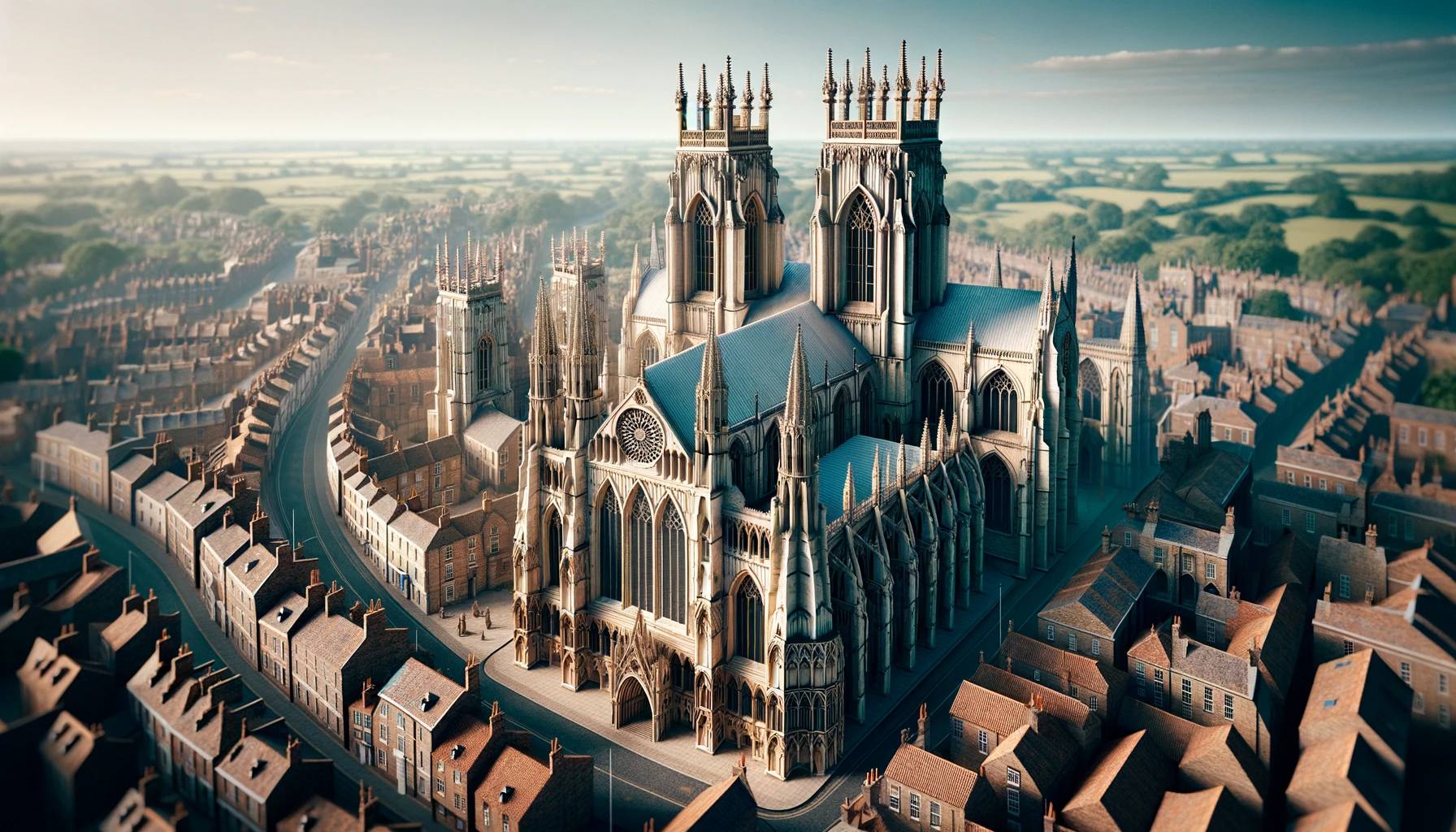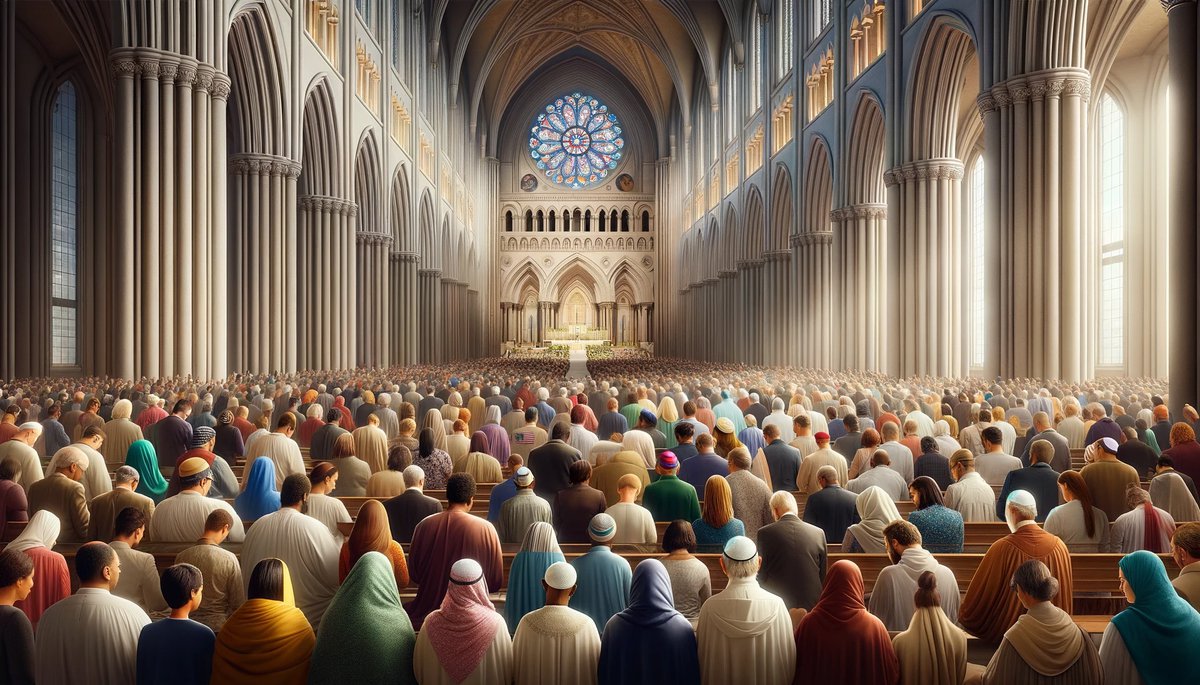Home>Arts and Culture>What Is The Definition Of A Cathedral
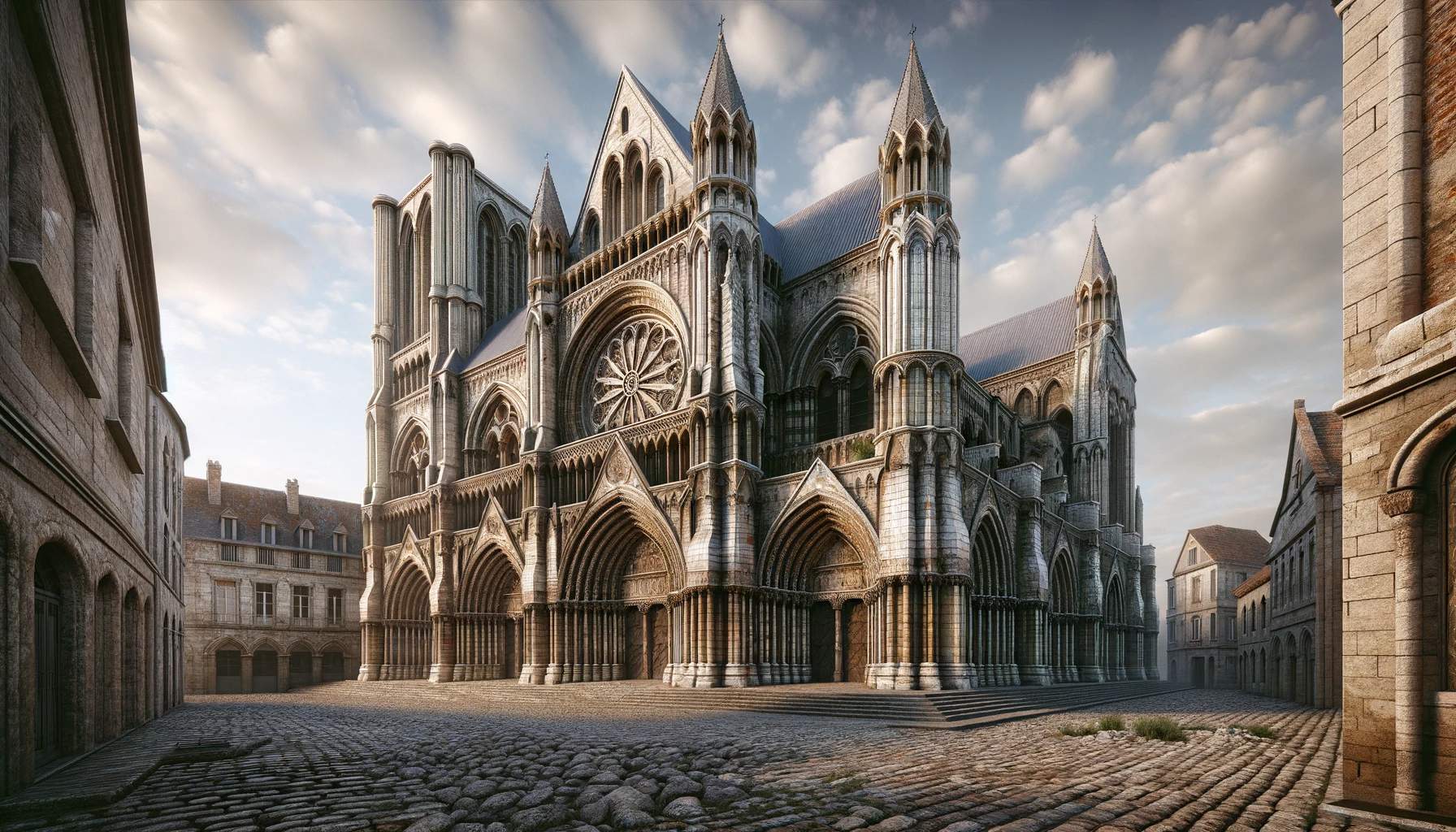

Arts and Culture
What Is The Definition Of A Cathedral
Published: February 16, 2024
Ericka Andersen, an editor at Christian.net, expertly merges digital strategy with content creation, focusing on faith and societal issues. Her communication skills enhance the platform's engaging narratives, fostering meaningful dialogue on belief's impact on society.
Discover the definition of a cathedral and its significance in arts and culture. Explore the architectural and historical aspects of cathedrals in this insightful guide.
(Many of the links in this article redirect to a specific reviewed product. Your purchase of these products through affiliate links helps to generate commission for Christian.net, at no extra cost. Learn more)
Table of Contents
Introduction
Cathedrals stand as majestic symbols of human creativity and spiritual devotion, captivating the imagination with their awe-inspiring architecture and profound historical significance. These grand structures, often characterized by towering spires and intricate stained glass windows, have long been revered as sacred spaces that embody the cultural and religious heritage of communities around the world.
From the towering spires of Notre-Dame de Paris to the intricate façade of the Milan Cathedral, these architectural marvels have withstood the test of time, serving as enduring testaments to the ingenuity and craftsmanship of the artisans and builders who brought them to life. Each cathedral holds within its walls a rich tapestry of stories, art, and faith, inviting visitors to embark on a journey through time and spirituality.
As we delve into the world of cathedrals, we will explore the historical, architectural, and cultural dimensions that define these remarkable edifices. From their origins in medieval Europe to their continued relevance in contemporary society, cathedrals offer a window into the evolution of human creativity and religious expression.
Join us on a captivating exploration of cathedrals, where we will unravel the mysteries and marvels that make these sacred structures an integral part of our cultural landscape. Through this journey, we will gain a deeper understanding of the profound impact that cathedrals have had on art, architecture, and the human spirit throughout the ages.
Read more: What Is Sanctifying Grace Definition
Historical Background of Cathedrals
The history of cathedrals is deeply intertwined with the evolution of Christianity and the cultural landscape of medieval Europe. The term "cathedral" itself is derived from the Latin word "cathedra," which translates to "seat" and refers to the bishop's throne within the church. This association with the bishop underscores the central role of cathedrals as the primary church of a diocese, where the bishop presides over religious ceremonies and governance.
The origins of cathedrals can be traced back to the early Christian era, when Roman basilicas served as gathering places for Christian communities. Over time, these basilicas evolved into grander structures, reflecting the growing influence and resources of the Church. The transition from modest basilicas to monumental cathedrals was fueled by a combination of religious fervor, architectural innovation, and the patronage of powerful rulers and nobility.
During the medieval period, cathedrals became ambitious undertakings that showcased the wealth and spiritual devotion of the communities that built them. The construction of a cathedral often spanned decades, if not centuries, with successive generations of craftsmen and laborers contributing to their creation. The Gothic style, characterized by soaring vaulted ceilings, pointed arches, and elaborate ornamentation, emerged as the dominant architectural form for cathedrals, reaching its zenith in the 12th and 13th centuries.
The construction of cathedrals was not only a testament to religious piety but also a reflection of the political and economic power dynamics of the time. Rulers and nobility vied for the opportunity to patronize cathedral construction, viewing it as a means to demonstrate their wealth, influence, and devotion to the Church. The resulting edifices, such as Chartres Cathedral in France and Canterbury Cathedral in England, became enduring symbols of civic pride and spiritual grandeur.
Furthermore, the construction of cathedrals often involved the labor of entire communities, including skilled artisans, stonemasons, and laborers. The intricate carvings, sculptures, and stained glass windows that adorned these structures were crafted with meticulous care, embodying the collective aspirations and creativity of the people who contributed to their construction.
As the centuries unfolded, cathedrals continued to evolve, adapting to changing architectural styles and religious practices. While many cathedrals retained their original Gothic splendor, others underwent renovations and additions in subsequent periods, reflecting the diverse influences that shaped their ongoing legacy.
The historical background of cathedrals is a testament to the enduring impact of these remarkable structures on the cultural, religious, and architectural heritage of humanity. Their evolution from humble beginnings to towering masterpieces mirrors the intricate tapestry of human history, inviting us to marvel at the ingenuity and devotion that brought them into being.
Architectural Features of Cathedrals
The architectural features of cathedrals are a testament to the ingenuity and craftsmanship of the artisans and builders who brought these magnificent structures to life. From soaring spires to intricate stained glass windows, cathedrals showcase a blend of artistic vision and technical prowess that continues to inspire awe and admiration.
1. Gothic Splendor
The Gothic style, synonymous with many cathedrals, is characterized by its towering spires, pointed arches, and ribbed vaults. These architectural elements not only serve as aesthetic marvels but also contribute to the structural integrity of the buildings. The use of flying buttresses, which transfer the weight of the vaulted ceilings to the exterior walls, allowed for the creation of expansive, light-filled interiors, defying the limitations of earlier architectural forms.
2. Stained Glass Windows
One of the most captivating features of cathedrals is their stained glass windows, which adorn the interiors with a kaleidoscope of colors and light. These windows, often depicting biblical narratives and scenes from the lives of saints, serve as both decorative elements and vehicles for conveying religious teachings to the illiterate masses of the medieval era. The intricate craftsmanship and vibrant hues of the stained glass infuse the interiors with a transcendent ambiance, inviting contemplation and spiritual reflection.
Read more: What Is A Cathedral Church
3. Sculptural Ornamentation
Cathedrals are adorned with a wealth of sculptural ornamentation, including intricately carved stone reliefs, statues, and decorative elements. These sculptures, often depicting religious figures, mythical creatures, and scenes from scripture, contribute to the visual narrative of the cathedral, inviting visitors to immerse themselves in the stories and symbolism woven into the fabric of the building.
4. Sacred Geometry
The layout and proportions of cathedrals often adhere to principles of sacred geometry, imbuing the spaces with a sense of harmony and divine order. The use of geometric patterns, such as the golden ratio and intricate labyrinth designs, reflects a belief in the interconnectedness of the physical and spiritual realms, creating an environment conducive to contemplation and meditation.
5. Towering Spires
The soaring spires of cathedrals reach towards the heavens, serving as beacons of faith and aspiration. These monumental structures, often adorned with intricate tracery and sculptural details, symbolize the human desire to transcend earthly limitations and connect with the divine. The spires also function as visual landmarks, guiding pilgrims and travelers towards the sacred precincts of the cathedral.
The architectural features of cathedrals, with their blend of artistic expression and structural innovation, continue to captivate and inspire visitors from around the world. These timeless edifices stand as a testament to the enduring legacy of human creativity and spiritual devotion, inviting us to marvel at the intersection of art, architecture, and faith.
Role and Function of Cathedrals in Society
Cathedrals have played multifaceted roles in shaping the social, cultural, and religious fabric of communities throughout history. Beyond serving as places of worship, these grand edifices have functioned as centers of learning, artistic expression, and civic identity, leaving an indelible mark on the societies they inhabit.
Read more: What Is The Cathedral In Madrid
1. Spiritual Center
At the heart of their function, cathedrals serve as spiritual sanctuaries, providing a sacred space for communal worship, prayer, and religious ceremonies. As the seat of a bishop, a cathedral holds a position of prominence within the ecclesiastical hierarchy, symbolizing the spiritual authority and guidance offered to the faithful. The awe-inspiring architecture and ethereal ambiance of cathedrals create an environment conducive to contemplation, fostering a sense of connection with the divine and offering solace to those in search of spiritual fulfillment.
2. Educational Hub
Cathedrals have historically served as centers of education and enlightenment, housing libraries, scriptoria, and schools that nurtured intellectual pursuits and preserved knowledge. Monastic and cathedral schools within these sacred precincts played a pivotal role in the preservation and transmission of classical learning, contributing to the intellectual renaissance of the medieval era. The intricate carvings, sculptures, and stained glass windows of cathedrals also served as visual narratives, conveying religious teachings and historical events to a largely illiterate populace.
3. Cultural Epicenter
As architectural marvels and repositories of artistic treasures, cathedrals have been cultural epicenters that fostered creativity and expression. The patronage of skilled artisans, sculptors, and craftsmen by cathedral authorities led to the creation of masterful works of art that adorned these sacred spaces. The music, liturgical chants, and sacred rituals performed within cathedrals enriched the cultural tapestry of their respective societies, contributing to the development of musical and artistic traditions that endure to this day.
4. Civic Identity
Cathedrals have served as symbols of civic pride and identity, often becoming the focal point of community life and collective memory. The construction and embellishment of cathedrals were often supported by the contributions of local guilds, merchants, and nobility, reflecting a shared commitment to the prosperity and prestige of the city or region. The grand processions, festivals, and civic events held within the shadow of cathedrals reinforced their role as unifying symbols that transcended social divisions and celebrated communal solidarity.
Read more: What Is A Nave In A Cathedral
5. Architectural Legacy
The enduring presence of cathedrals has left an indelible mark on the architectural legacy of societies, inspiring subsequent generations of builders and designers. The innovative structural techniques and artistic flourishes employed in the construction of cathedrals have influenced architectural styles and engineering practices, shaping the skylines of cities and leaving an imprint on the built environment. The preservation and restoration of cathedrals also serve as a testament to the collective commitment to safeguarding cultural heritage and ensuring that these architectural marvels continue to inspire awe and reverence for centuries to come.
Cathedrals, with their multifaceted roles as spiritual, educational, cultural, and civic institutions, have woven themselves into the very fabric of society, leaving an enduring legacy that transcends the boundaries of time and tradition. Their significance extends far beyond their religious function, encompassing a rich tapestry of human endeavors and aspirations that continue to resonate with contemporary audiences.
Significance of Cathedrals in Religion
Cathedrals hold profound significance within the realm of religion, serving as sacred spaces that embody the spiritual aspirations and theological narratives of the Christian faith. These monumental edifices stand as tangible expressions of divine transcendence and human devotion, shaping the religious experiences of congregants and pilgrims through their architectural grandeur and symbolic resonance.
-
Sacred Encounters: Cathedrals provide a physical setting for sacred encounters, where the faithful can engage in communal worship, prayer, and sacramental rituals. The awe-inspiring architecture, ethereal light filtering through stained glass, and reverberating echoes of liturgical music create an atmosphere conducive to spiritual contemplation and transcendence. The sacred precincts of cathedrals offer a sanctuary for believers to seek solace, guidance, and a sense of connection with the divine.
-
Theological Narratives: The architectural elements and artistic embellishments of cathedrals serve as visual and symbolic representations of theological narratives and biblical teachings. From the intricate carvings that depict scenes from scripture to the celestial motifs adorning the vaulted ceilings, cathedrals communicate the foundational beliefs and sacred stories of Christianity. The visual splendor of these sacred spaces becomes a medium through which religious truths are conveyed and contemplated, enriching the spiritual understanding of the faithful.
-
Pilgrimage and Devotion: Cathedrals have been destinations for pilgrims seeking spiritual fulfillment and divine grace. The arduous journeys undertaken to reach these sacred sites reflect a deep-seated devotion and a quest for spiritual renewal. The relics, shrines, and venerated artworks housed within cathedrals serve as focal points for veneration and pilgrimage, drawing believers from far and wide to partake in the spiritual aura of these hallowed spaces.
-
Ecclesiastical Authority: As the seat of a bishop, a cathedral embodies the ecclesiastical authority and spiritual leadership of the Church within a diocese. The bishop's cathedra, or throne, symbolizes the teaching and pastoral role of the episcopal office, underscoring the continuity of apostolic succession and the governance of the faith community. The cathedral thus becomes a tangible representation of the spiritual oversight and guidance provided by the episcopal ministry.
-
Continuity and Tradition: Cathedrals serve as custodians of religious continuity and tradition, preserving the liturgical practices, sacred music, and ceremonial rites that have been passed down through generations. The timeless rituals performed within these sacred precincts connect the contemporary faithful with the enduring legacy of their religious heritage, fostering a sense of continuity and belonging within the broader tapestry of Christian tradition.
In essence, the significance of cathedrals in religion transcends their role as architectural marvels; they are living embodiments of faith, spirituality, and the enduring quest for divine communion. These sacred spaces continue to inspire reverence, contemplation, and spiritual renewal, enriching the religious lives of believers and standing as testaments to the enduring power of faith throughout the ages.
Conclusion
In conclusion, cathedrals stand as timeless testaments to the convergence of human creativity, spiritual devotion, and cultural heritage. From their origins in medieval Europe to their enduring presence in contemporary society, these grand edifices have left an indelible mark on the architectural, religious, and social landscapes of the world. The historical background of cathedrals reveals a narrative of faith, ambition, and communal endeavor, reflecting the intricate interplay of religious piety, political patronage, and artistic innovation that shaped their evolution.
The architectural features of cathedrals, characterized by Gothic splendor, stained glass windows, sculptural ornamentation, sacred geometry, and towering spires, continue to captivate and inspire visitors, inviting them to marvel at the intersection of art, engineering, and spiritual symbolism. These architectural marvels not only serve as visual spectacles but also embody the collective aspirations and ingenuity of the communities that brought them into existence.
Furthermore, the multifaceted roles of cathedrals as spiritual sanctuaries, centers of learning, cultural epicenters, and symbols of civic identity underscore their profound impact on society. These grand edifices have transcended their religious function to become pillars of communal identity, fostering intellectual enlightenment, artistic expression, and civic pride within their respective communities.
In the realm of religion, cathedrals hold profound significance as sacred spaces that facilitate spiritual encounters, convey theological narratives, inspire pilgrimage and devotion, and embody ecclesiastical authority. Their enduring presence as custodians of religious tradition and continuity enriches the spiritual lives of believers, fostering a sense of connection with the timeless heritage of the Christian faith.
As we reflect on the significance of cathedrals, we are reminded of their enduring legacy as embodiments of human aspiration and spiritual transcendence. These sacred spaces continue to beckon visitors from around the world, inviting them to embark on a journey through history, art, and faith. The profound impact of cathedrals on the human spirit endures, serving as a testament to the enduring power of creativity, devotion, and the quest for transcendence.


